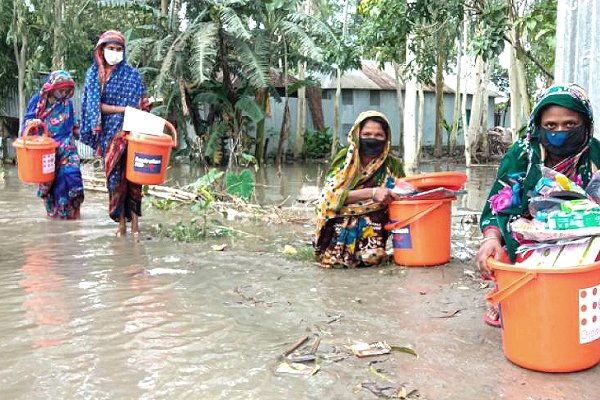
Forecast-based action a ‘bright spot in a bleak humanitarian outlook’

UN humanitarian chief Mark Lowcock has welcomed the forecast-based action that recently enabled several UN agencies to undertake anticipatory interventions for the monsoon floods in Bangladesh.
“Innovations like this are the bright spots in a bleak humanitarian outlook,” said Mr Lowcock, the UN Under-Secretary-General for Humanitarian Affairs and Emergency Relief Coordinator.
“Advances in data and predictive analytics mean we can predict many crises and take action as soon as we know the problem is coming. If disasters take us by surprise, it’s because we weren’t looking,” he added, speaking in an interview for the website of the UN Central Emergency Response Fund (CERF).
Under a forecast trigger mechanism first developed by the Red Cross Red Crescent, a warning on 4 July of a high probability of severe flooding along the Jamuna River enabled the “UN to immediately release US$ 5.2 million from CERF to help communities urgently prepare,” the CERF report says.
‘The funding was the fastest CERF allocation in history’
The money went to the UN Food and Agriculture Organization, the World Food Programme and the United Nations Population Fund for “cash, livestock feed, storage drums, and hygiene, dignity [photo] and health kits.”
The CERF article adds: “The release of funding is the first time the UN’s Central Emergency Response Fund has been used in this way and was the fastest CERF allocation in history – within four hours of the trigger being activated, the delivery agencies had been given authority to spend the money.”
The UN worked with the Bangladesh Red Crescent Society, the IFRC and other agency partners to assist communities at risk in the Bogura, Gaibandha, Kurigram, Jamalpur and Sirajgonj districts.
The BDRCS itself implemented early actions with forecast-based funds from the IFRC to protect the lives, property and livelihoods of more than 16,500 people most at risk in Kurigram, Gaibandha and Jamalpur.
Mr Lowcock added: “Doing something before crises hit can save more lives and costs less money – plus it’s far more dignified for the people we’re helping.
“If we know a flood is about to hit, why wouldn’t we give river communities the means to get themselves, their livestock and their tools out of harm’s way before the deluge comes, instead of waiting until they’ve lost everything then try and help? It’s a no-brainer.”
CARE Bangladesh distributes dignity kits to members of the transgender community affected by monsoon floods earlier this month. Credits: UNFPA/Bangladesh